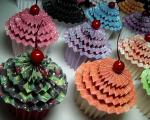How much did the first ballpoint pens cost? The history of ballpoint pens
With the arrival of ballpoint pens on the stationery market, schoolchildren were able to breathe a sigh of relief. Blots, blotters, notebooks covered in ink, smeared hands and face are a thing of the past. After all, previously the student’s task was not so much learning to write, but the ability to handle pens and inkwells.
The advent of ballpoint pens
The main inconvenience of fountain pens and liquid pens was the need to regularly wet the pen with ink, which was still acceptable at school, but significantly slowed down any processes in the adult world - from political to industrial. A special need for transformation was observed where pilots were forced to use pencils.
The idea of a permanent supply of ink to the writing unit of a pen has been considered by inventors for a long time. The first analogues of a pen with a ball built into the writing tip were discovered on the territory of modern Armenia in a drawing dated 1166.
Subsequently, the idea of a rotating tip was returned to repeatedly - 350 patents were issued in the USA alone. But the official inventors are the American John D. Loud and the Hungarians Laszlo and Georg Biro, who patented non-leak handles.
The idea to organize our own production of ballpoint pens in the Soviet Union arose in 1949. It was not in the traditions of the Soviet state to purchase patents, especially for public consumption. Therefore, domestic copies were created based on the best world samples.
The production of ballpoint pens was carried out by local industrial enterprises and industrial cooperatives. The quality of the product was so low that the appearance of the first ballpoint pens passed without a stir. The problem was the poor design of the writing unit. The complex procedure for refilling the balloon again created inconveniences - a ball was removed from the tip, a new portion of ink was pumped through the resulting hole with a syringe, and the ball was rolled back into the sphere. There were even stationary refueling points.
The quality of the ink, for the production of which they began to use a mixture of castor oil and rosin, also left much to be desired.
At that time, the Union did not have the technological capabilities to eliminate these shortcomings, pens ceased to be in demand and were no longer produced.
The production of ballpoint pens resumed in 1965 at the Kuibyshev Ball Bearing Plant. Then Swiss equipment was purchased for the production of writing units and the recipe for Parker ink was discovered.
However, the introduction of ballpoint pens into mass culture occurred in the early 70s.
The popularization of the model was hampered by educational standards, according to which great importance was attached to the formation of handwriting. The technical capabilities of a ballpoint pen did not allow the implementation of the requirements for “writing out” letters that existed at that time.
For a long time, the problem was the issue of components - replacing a written rod was extremely difficult, you had to buy a new one.
But with the solution of these issues, a design boom for ballpoint pens began in the Union. Sets of colored pens, automatic, two-, four-, and six-color ballpoint pens began to be produced.
Interesting fact: among the Kremlin leaders, M.S. was the first to sign documents with a Parker ballpoint pen. Gorbachev. Previous leaders preferred either pencils or solid ink devices.
When did they appear in the Soviet Union?
Ballpoint pens became widespread in the USSR in the late 60s, but for a long time they were not accepted for use by Soviet schoolchildren. At first, the quality of such writing instruments left much to be desired. But the main reason for refusing to use ballpoint pens was the struggle for the calligraphic handwriting of Soviet students.
Until the mid-70s, schoolchildren in the USSR used quills with non-spill inkwells and later - fountain pens filled with ink from factory bottles. If the teacher noticed that the text in the notebook was written with a ballpoint pen, he could give the student a “two” as for unfinished work.
What are the disadvantages of a ballpoint pen?
According to the director of Moscow school No. 760 Garmash, Soviet bans on the use of ballpoint pens were intended not only and not so much to develop beautiful handwriting in a child, but to provide optimal conditions for his psychophysical development.
Vladimir Yuryevich refers to the opinions of doctors who have drawn conclusions that are not in favor of ballpoint pens for young children: with such writing, the child experiences breath holding and heart rhythm disturbances. In addition, a junior student can write continuously with a ballpoint pen in this mode for up to 20 minutes, which has an adverse effect on his health.
When writing with a ballpoint pen, the muscles of the student’s back and abdomen are tense, which causes the child’s motor skills to suffer. Largely as a result of this forced constraint, many childhood diseases arise and the educational and cognitive capabilities of children are reduced.
Pros of the pen
Another authoritative specialist in the field of pedagogy and medicine, Doctor of Medical Sciences, honorary worker of general education V. F. Bazarny, also agrees with Vladimir Yuryevich. Vladimir Filippovich is convinced that the refusal to use fountain pens in Soviet schools was the wrong decision: these writing instruments are optimally suited for the development of certain skills in a child at school and, moreover, the process of writing with a fountain pen takes place in unison with the psychophysical activity of the student.
Firstly, using a fountain pen initially “positions” the child’s hand correctly, and secondly, the vital rhythms of the body - brain impulses, heartbeat, breathing rate - proceed at the same frequency as the process of pulse-pressure calligraphic writing with such a device, Bazarny believes .
Such writing, according to the scientist, over time contributes to the development of motor automatism in the child, consistent with the nature of endogenous biorhythms. Bazarny is convinced that it is enough to use fountain pens during the first years of education - then the necessary, correct rhythm of writing will be retained by a person when writing with other accessories.
Teachers from the Balashikha Zemstvo Gymnasium, where students use fountain pens, say that children write with them more competently and thoughtfully. The child performs the task more calmly because the frequency of pressing the pen coincides with the heart rate. Moreover, it is easier to write with a fountain pen than with a ballpoint pen: you don’t have to press so hard on the paper.
In which countries do they write with fountain pens?
At the state level, in primary schools it is mandatory to use fountain pens in Ukraine and Germany. Last year, the Association of Parental Committees and Communities sent an open letter to the President of Russia, the Minister of Education and other authorized persons, in which they asked to support the “Russian Classical School” system of education and national patriotic education of children.
The project, in particular, provides for a return to many positive teaching methods and tools in general education institutions that were used in the USSR. It also contains a clause on the mandatory use of fountain pens instead of ballpoint pens in elementary grades.
The history of pens is inseparable from the history of human civilization itself. We can say that the first pens are the same age as the first writing. Having invented cuneiform writing, the inhabitants of Ancient Babylon also invented the first pens - pebbles, with which they pressed signs on soft clay. In the ancient world, wax tablets were in use, the handles of which were sharp sticks made of bone or copper. Of the ancient writing instruments, the closest thing to a modern pen is the brush, invented in China. Ancient Chinese brushes were made from camel or rat hair. For writing, ink was used, which included soot, pine resin, lamp oil and gelatin obtained from donkey skin. Somewhat later, ink was invented in Europe with the ability to maintain its brightness for hundreds of years. To prepare such ink, they took various iron salts and so-called ink nuts, which are growths on the bark of trees. The first European pen to write with ink was a thin, pointed stem of bamboo or reed. Pens based on bird feathers appeared only in the 8th century AD. Feathers were much more convenient for writing than reed sticks, but making “fountain” pens took a lot of time and effort. Feathers were taken only from young, healthy geese and only in the spring. The feathers were then burned in hot sand to dry and harden them. Next, the tips of the feathers were sharpened with knives, which were called penknives. Russia was one of the largest producers of writing pens in the world. Thus, the Russian Empire exported 27,000,000 feathers annually to Great Britain alone. Throughout the 19th century, engineers pondered how to create a pen that did not need to be constantly dipped in ink. And finally, in 1884, a fountain pen was born, which included a special ink reservoir connected to the nib by grooves. The grooves carried ink to the pen, which was equipped with a round hole in the middle to reduce the number of blots. Invented in 1938 ballpoint pens. It all started when a journalist from Hungary, Ladislo Biro, drew attention to the fact that newspaper ink dries much faster than regular ink. However, it was impossible to use newspaper ink for pens due to its excessive thickness. Then Biro decided to improve the pen so that it would be suitable for writing with very thick ink. Ladislo Biro created a tube pen with a miniature ball at the end of the shaft. This is how ballpoint pens came into being. The essence of the ballpoint pen mechanism is that at the moment when the ball moves across the paper, it rotates and captures the thick ink contained in the rod. Even the very first ballpoint pens had the ability to leave a mark six kilometers long. Entrepreneurs from England became interested in Biro's invention and bought a patent from him for the production of ballpoint pens, adapting them to the needs of aviation.
Throughout the 19th century, engineers pondered how to create a pen that did not need to be constantly dipped in ink. And finally, in 1884, a fountain pen was born, which included a special ink reservoir connected to the nib by grooves. The grooves carried ink to the pen, which was equipped with a round hole in the middle to reduce the number of blots. Invented in 1938 ballpoint pens. It all started when a journalist from Hungary, Ladislo Biro, drew attention to the fact that newspaper ink dries much faster than regular ink. However, it was impossible to use newspaper ink for pens due to its excessive thickness. Then Biro decided to improve the pen so that it would be suitable for writing with very thick ink. Ladislo Biro created a tube pen with a miniature ball at the end of the shaft. This is how ballpoint pens came into being. The essence of the ballpoint pen mechanism is that at the moment when the ball moves across the paper, it rotates and captures the thick ink contained in the rod. Even the very first ballpoint pens had the ability to leave a mark six kilometers long. Entrepreneurs from England became interested in Biro's invention and bought a patent from him for the production of ballpoint pens, adapting them to the needs of aviation.  Despite the fact that it was Biro who invented the ballpoint pen, the world remembers another person more - George Stafford Parker, who worked as a pen sales agent. Customers often complained to Parker about the quality of the goods he sold. Parker didn't like this very much, and he decided to make his own pen, which could no longer cause any complaints. Parker was successful, and very soon he opened his own production of ballpoint pens. In addition to writing instruments, in the website store you can purchase Casio watches, reviews of which confirm the ideal price-quality ratio of these watches, as well as Swiss Tissot watches. In the Soviet Union, the first ballpoint pens appeared after the Great Patriotic War. The Soviet government asked Mr. Parker to organize the production of pens on the territory of the Union. The choice of Parker was determined by the fact that the Parker pen was in the hands of General Eisenhower when he signed the act of surrender of Nazi Germany.
Despite the fact that it was Biro who invented the ballpoint pen, the world remembers another person more - George Stafford Parker, who worked as a pen sales agent. Customers often complained to Parker about the quality of the goods he sold. Parker didn't like this very much, and he decided to make his own pen, which could no longer cause any complaints. Parker was successful, and very soon he opened his own production of ballpoint pens. In addition to writing instruments, in the website store you can purchase Casio watches, reviews of which confirm the ideal price-quality ratio of these watches, as well as Swiss Tissot watches. In the Soviet Union, the first ballpoint pens appeared after the Great Patriotic War. The Soviet government asked Mr. Parker to organize the production of pens on the territory of the Union. The choice of Parker was determined by the fact that the Parker pen was in the hands of General Eisenhower when he signed the act of surrender of Nazi Germany.  Parker did not want to cooperate with Stalin, and Soviet engineers had to do everything on their own. As ink, Soviet specialists decided to use a mixture that was customary in those days to fight flies - a mixture of rosin and castor oil. In 1949, the production of Soviet ballpoint pens was launched. For a long time, ballpoint pens were quite an expensive product. Prices fell in 1958 when a French entrepreneur named Bic created a new type of disposable ballpoint pen, BIC. The pens were cheap, easy to use, quite reliable and could write on almost all types of paper. With the advent of BIC pens, ballpoint pens have become a consumer product. Today, ballpoint pens with inks of all colors of the rainbow are produced around the world. At the same time, black remains the most favorite color. Next comes blue, and then red and green.
Parker did not want to cooperate with Stalin, and Soviet engineers had to do everything on their own. As ink, Soviet specialists decided to use a mixture that was customary in those days to fight flies - a mixture of rosin and castor oil. In 1949, the production of Soviet ballpoint pens was launched. For a long time, ballpoint pens were quite an expensive product. Prices fell in 1958 when a French entrepreneur named Bic created a new type of disposable ballpoint pen, BIC. The pens were cheap, easy to use, quite reliable and could write on almost all types of paper. With the advent of BIC pens, ballpoint pens have become a consumer product. Today, ballpoint pens with inks of all colors of the rainbow are produced around the world. At the same time, black remains the most favorite color. Next comes blue, and then red and green.
Colored pencils. Large set of colored pencils “Painting” from the Sacco and Vanzetti factory. The pencils in the small sets are made of some vague synthetic material. Collet pens were also produced for colored leads (larger in diameter); instead of a lead, you could insert a rod and use it as a ballpoint pen.
Plastic pencil case. Makes a gorgeous “click” sound when opened sharply. 
e pensil box 
The side walls and partition of the pencil case are wooden, and the bottom and lid are made of plastic, which was used to cover the lids of desks. I received this as a gift for my kindergarten graduation, only the ridiculous picture on the lid was different.

"Push-button" handles. The rod is short and has a protrusion for the spring. If necessary, such a rod was inserted into a regular handle, equipped with an “extension” made from a match.

Ballpoint pens. Along the edges of the handles are among the most inexpensive ones, which were most often supplied to elementary school students, the second one on the left differs in the proportions of the halves - it unscrews almost in half. The third one from the left is a pen from a notebook or something. Under the short rod. It was possible to use a short rod from a “push-button” one.

Ink pens. In the late eighties, these were found only at the post office and in savings banks, where they filled out receipts. And when publishing “wall newspapers” - then instead of a regular pen they used the so-called. posters like the one on the second from the left. Fountain pens are still used today, and Rainbow ink is still produced.

Pencils. On the left are collet pencils. On the right is chemical - when wet, the lead turns blue. The second from the right is a pencil with an eraser; it is slightly larger in diameter than ordinary pencils.

The legendary Czechoslovakian kohinor.

Fashionable pencil case with Velcro. Mostly, pencil cases of this type were red, and instead of Velcro, it was closed with a strap that quickly came off.

Wooden rulers.

“Special” rulers: logarithmic and crossbar. Inside there is a metal rod with a notch, which in the window shows the distance by which the ruler was moved up or down.

Set of drawing accessories. 
Paper clips, buttons and hole punch

Officer's line. Nowadays they make these too, but before they were made from QUICK BURNER™! It was convenient to use in Russian lessons, emphasizing with a wavy line some parts of speech. I don’t know if they were popular in regular schools - in our class there were mostly military children. Larger “marine” rulers with a different set of “symbols” were also produced; I also shot one for artifacts 76-82.

Drawing set from the 70s.

Calculators)

All sorts of other rulers, protractors, patterns, stencils, etc.

Scissors with a cover.


And these are font stencils. Available in different sizes. The smallest letters were of a different type than the larger ones.

Folders for papers.



